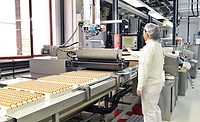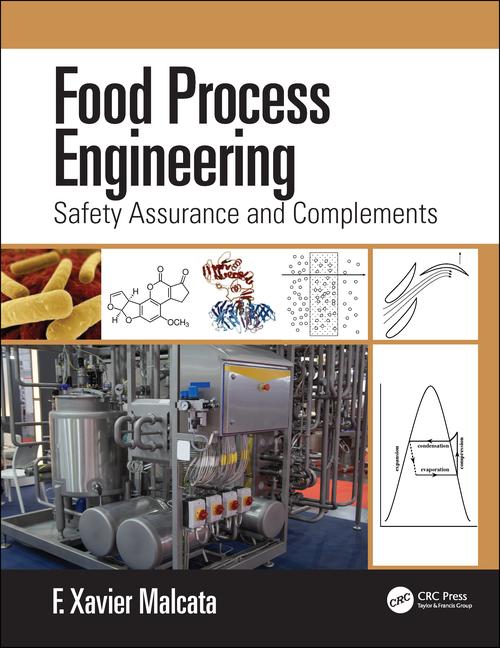Food Safety: A team approach to audits must be in place
Today’s audits are not only more complex, they are more comprehensive and demand a collaborative effort.

Most processors have teams within their organizations, such as production, quality, engineering, sanitation, shipping, receiving and purchasing. Audits have helped bring these groups together and get everyone “on the same page.” A few years ago, the only point man or woman for the sanitation or food safety audit was the quality assurance manager. He or she worked with the auditor, took him or her through the plant, and provided nearly all of the information.
Today, audits are not only more complex, they are more comprehensive. Even though the quality manager may still be the point person, he or she must do much more. And that means making sure that every operating group understands its role, has documented procedures, maintains records and ensures that its staff has been trained on all procedures pertaining to quality and safety.
In addition, the quality manager must ensure each operating group is subject to internal audits conducted to ensure it is following established procedures. Doing the audits is not solely the responsibility of quality, however. The quality manager should be coordinating the program, but the auditors should include members from different operating groups. The key to proper internal audits is a trained cadre of internal auditors who are independent of the operations they are auditing. For example, production audits engineering; maintenance audits receiving; etc.
When an internal audit or one conducted by a third party finds an issue, the plant must correct the problem and, if necessary, develop a program to prevent it from occurring again. Corrective and preventive actions must be addressed by the operating group responsible for that area. The role of quality is to monitor that corrections are being made and verify that they have been implemented. Quality ensures that the loop is closed, but does not do the work themselves.
The focus of third-party audits, especially those approved by the Global Food Safety Initiative, draw on the quality principles established by ISO 9000. Processors must: develop and implement procedures and work instructions; train employees on those protocols; maintain records that the work is being completed as written; review and verify these records; conduct audits to ensure protocols are being followed; initiate corrective and preventive actions when required; and work for continuous improvement.
One method for doing this is a management review which brings together all operating groups on a regular schedule, with the primary goal of reviewing operations and developing improvement plans based on internal audits and other factors.
Standardization of methods for developing, reviewing and approving procedures and work instructions is part of this equation. A few years back, many operating groups had their own procedures written in their own formats. Changes were made on whim or to make things easier, not based on risk assessment. Procedures and forms were often a mish-mash of different formats, old, new and outdated recordkeeping forms and variable recordkeeping practices. Today, most companies have a document control procedure that every operating group must follow. Now, the company is working as a team and not as individual entities.

Advanced Instruments; 800-225-4034; www.aicompanies.com
Agilent Technologies; 800-227-9770; www.agilent.com

Shimadzu Scientific Instruments Inc; 800-477-1227; www.ssi.shimadzu.com

Perten Instruments; 217-585-9440; www.perten.com

Most processors have teams within their organizations, such as production, quality, engineering, sanitation, shipping, receiving and purchasing. Audits have helped bring these groups together and get everyone “on the same page.” A few years ago, the only point man or woman for the sanitation or food safety audit was the quality assurance manager. He or she worked with the auditor, took him or her through the plant, and provided nearly all of the information.
Today, audits are not only more complex, they are more comprehensive. Even though the quality manager may still be the point person, he or she must do much more. And that means making sure that every operating group understands its role, has documented procedures, maintains records and ensures that its staff has been trained on all procedures pertaining to quality and safety.
In addition, the quality manager must ensure each operating group is subject to internal audits conducted to ensure it is following established procedures. Doing the audits is not solely the responsibility of quality, however. The quality manager should be coordinating the program, but the auditors should include members from different operating groups. The key to proper internal audits is a trained cadre of internal auditors who are independent of the operations they are auditing. For example, production audits engineering; maintenance audits receiving; etc.
When an internal audit or one conducted by a third party finds an issue, the plant must correct the problem and, if necessary, develop a program to prevent it from occurring again. Corrective and preventive actions must be addressed by the operating group responsible for that area. The role of quality is to monitor that corrections are being made and verify that they have been implemented. Quality ensures that the loop is closed, but does not do the work themselves.
The focus of third-party audits, especially those approved by the Global Food Safety Initiative, draw on the quality principles established by ISO 9000. Processors must: develop and implement procedures and work instructions; train employees on those protocols; maintain records that the work is being completed as written; review and verify these records; conduct audits to ensure protocols are being followed; initiate corrective and preventive actions when required; and work for continuous improvement.
One method for doing this is a management review which brings together all operating groups on a regular schedule, with the primary goal of reviewing operations and developing improvement plans based on internal audits and other factors.
Standardization of methods for developing, reviewing and approving procedures and work instructions is part of this equation. A few years back, many operating groups had their own procedures written in their own formats. Changes were made on whim or to make things easier, not based on risk assessment. Procedures and forms were often a mish-mash of different formats, old, new and outdated recordkeeping forms and variable recordkeeping practices. Today, most companies have a document control procedure that every operating group must follow. Now, the company is working as a team and not as individual entities.

Dairy components measurement
Advanced Instruments’ Delta Instruments LactoScope C3+/ C4+ analyzer for milk and cheese processors incorporates mid-infrared (MIR) technology, which is recognized worldwide by the IDF and AOAC as a standard method of analysis. The LactoScope’s MIR filter can measure specific bandwidths for the most commonly measured dairy components in milk. Through access to specific software applications, dairy processors using LactoScope C3+ can analyze fat, protein and total solids; with full C4+ software access, the capability to analyze lactose is added. A cheese application instrument can be used with the LactoScope to perform the same types of component analysis with cheese.Advanced Instruments; 800-225-4034; www.aicompanies.com
Headspace sampler
Agilent Technologies’ Model 7697A headspace sampler for gas chromatography (GC) sample analysis is based on the company’s automatic liquid sampler (ALS) technology, and features high performance without loss or degradation of volatile components found in the gas portion of partitioned GC samples. Headspace sampling allows the introduction of volatile compounds, from almost any matrix, directly into a GC or GC/MS instrument. The technique is relatively simple when compared to other injection techniques, such as purge and trap, and keeps instruments cleaner than the standard liquid injection. The machine can be used for environmental applications, such as identifying volatile substances in water, flavor and fragrance profiling, and food safety testing, such as detecting volatiles in beer and other beverages.Agilent Technologies; 800-227-9770; www.agilent.com

Gas chromatograph
Shimadzu Scientific Instruments’ GCMS-QP2010 Ultra is capable of fast data measurement with sensitivity five times higher than previous models. The gas chromatography-mass spectrometry unit uses mass spectrometry technology called Advanced Scanning Speed Protocol (ASSP), a firmware protocol that optimizes the ion transmission hardware parameters with a highly efficient data collection algorithm to increase data acquisition speed up to 20,000 u/sec and 100 Hz. ASSP also provides the benefit of maintaining system sensitivity at elevated scan speeds. To help increase throughput, the instrument features high-speed oven cooling for shorter analysis cycles. Using a double-jet cooling system, the GC cools from 350º to 50ºC in less than three minutes.Shimadzu Scientific Instruments Inc; 800-477-1227; www.ssi.shimadzu.com

Viscometer for QC/QA
Perten Instruments’ RVA 4500 is a cooking/stirring viscometer with ramped temperature and variable shear that can be used to determine the quality and processing characteristics of starch in grains, tubers, flours, and extruded and cooked foods and feeds. There are also applications for protein foods, ingredients such as modified starches and hydrocolloids, and malting and brewing.Perten Instruments; 217-585-9440; www.perten.com
Looking for a reprint of this article?
From high-res PDFs to custom plaques, order your copy today!








